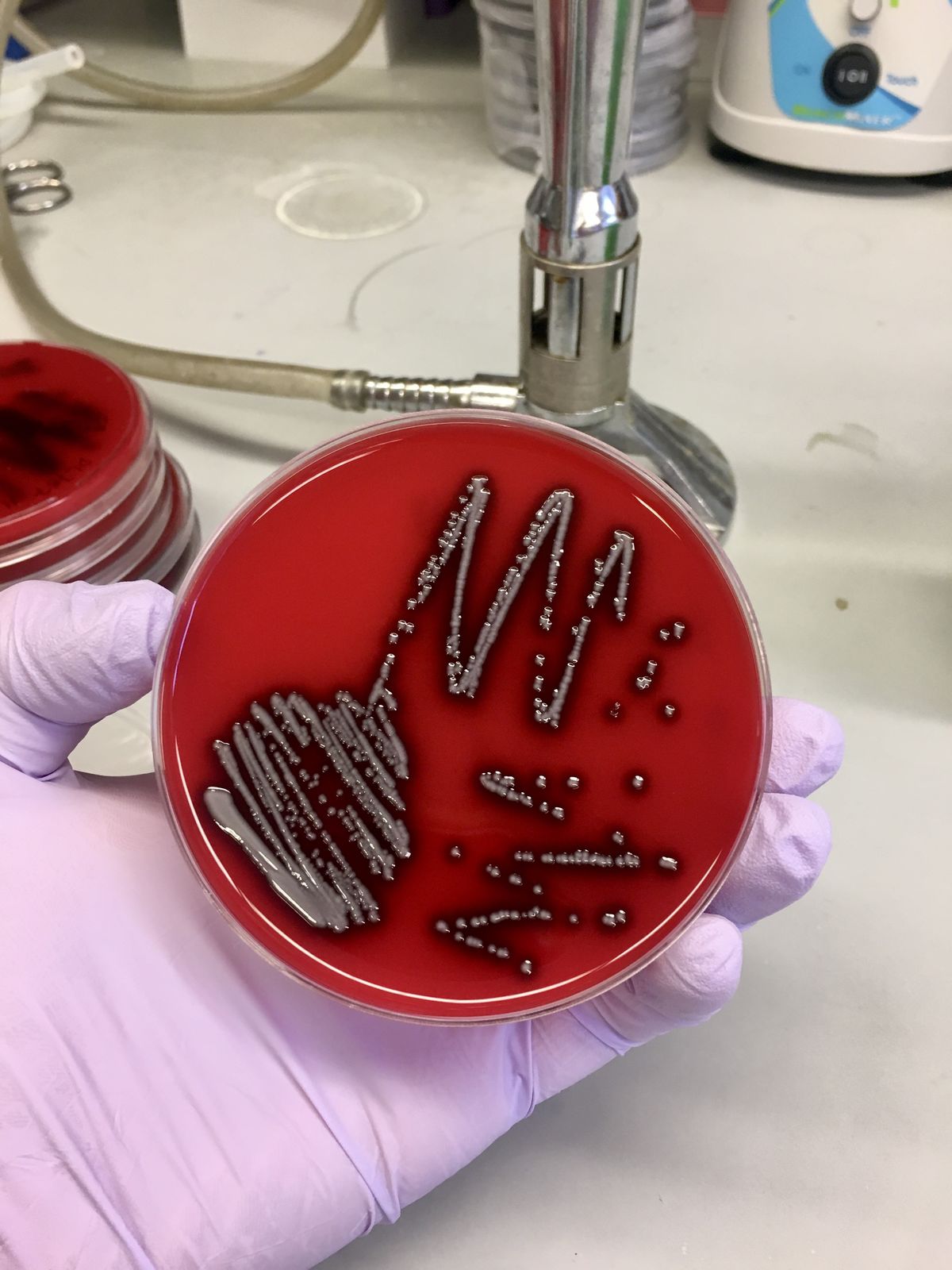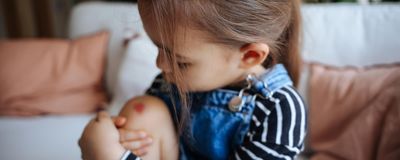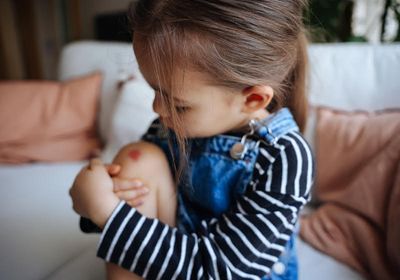ABOVE: A bacterium, Alcaligenes faecalis, found in the wound microbiome secretes factors that can accelerate wound healing. ©iStock, ozgurcankaya
Skin wounds that fail to heal in a normal timeframe are considered to be chronic, and an estimated two percent of the global population will experience a chronic wound in their lifetime.1 In addition to severe pain, individuals with chronic wounds can face mental health problems due to the persistent nature of the condition and the risk of recurrence. This significantly affects their quality of life, highlighting the need for effective treatments.
Given this unmet clinical need, researchers have been exploring a new frontier—the wound microbiome.2 Previously published studies have largely focused on faulty processes in skin cells that contribute to impaired healing, said Ellen White, a microbiologist in Elizabeth Grice’s research team at the University of Pennsylvania.3 “But recently, we've appreciated that there is a wound microbiome—an entire ecosystem that colonizes wounds and can influence wound healing.”
Highlighting this, White and her colleagues have shown that a bacterium found in chronic wounds can aid wound healing in mice.4 The results, published in Science Advances, uncover a mechanism of bacterial-driven wound repair and provide a foundation to develop microbiome-based therapies.
“This study is unique in terms of bringing light on the good part of the chronic wound microbiome,” said Irena Pastar, who researches microbiome interactions in cutaneous disorders at the University of Miami Miller School of Medicine and was not involved in the study.
To identify chronic wound-associated microbiota, Grice’s team swabbed diabetic foot ulcers from 100 participants and sequenced DNA from these samples.5 Among the bacteria abundantly present in the samples, they identified an environmental, non-pathogenic bacterium called Alcaligenes faecalis. Digging into published datasets, the team found that this bacterium was prevalent in different types of chronic wounds, such as pressure ulcers and venous leg ulcers.6,7 This prompted them to investigate the role of A. faecalis in chronic wounds.
For their experiments, the team used a diabetic mouse model that exhibits impaired wound healing. They made wounds measuring about eight millimeters in diameter on the back skin of these mice and treated them with A. faecalis culture. They photographed these wounds at different times and observed that wounds colonized with A. faecalis were significantly smaller than wounds treated with a control solution.
To better understand how A. faecalis influences wound healing, the researchers used in vitro assays to investigate whether the bacterium promoted cell migration, a crucial process that occurs in the outer skin layer during the early stages of wound healing.
They isolated keratinocytes, cells from the outermost layer of the skin, from diabetic mice and cultured them in lab dishes. Once the cells had formed a layer in the dish, the researchers introduced a thin scratch along the middle, disrupting the continuous layer of cells. They treated the system with either A. faecalis or a control solution and took photographs over time to track how quickly cells from the undisturbed side moved toward the scratch to fill the empty space. Compared to control-treated cells, A. faecalis treatment increased the rate at which keratinocytes migrate. They observed similar results when they repeated this experiment with skin cells obtained from people with diabetes, indicating that the bacterium likely influences wound healing in humans via a similar mechanism.

To gain insights into how A. faecalis promoted keratinocyte migration, the researchers collected wounds from diabetic mice treated with A. faecalis and sequenced RNA from the tissue. Compared to untreated tissue, wounds treated with A. faecalis exhibited a decrease in expression of several genes. The genes most significantly downregulated encoded matrix metalloproteinases (MMPs), enzymes that break down the extracellular matrix of cells. Previous studies have shown that keratinocytes near the wound edge express MMPs, which helps these cells migrate towards wounds to help them heal.8 However, diabetic conditions promote excessive MMP expression, which is detrimental to wound healing.9
Immunofluorescence analyses of wound tissue from diabetic mice revealed high expression of an MMP near the wound edge, which decreased following A. faecalis treatment. Adding MMPs to A. faecalis-treated wounds resulted in these behaving similar to wounds not treated with the bacterium, validating that A. faecalis achieves its pro-healing properties by lowering MMPs at the wound site.
White was excited by these unexpected findings, adding, “We didn't initially set out to find pro-healing bacteria.” These results offer a new perspective on the wound microbiome. “Most wounds end up healing, which means that not all bacterial colonization is bad. There are also some beneficial bacteria, which we can harness to have wound therapies,” said White.
“The results show that we need to think about how to retain friendly bacteria while using less aggressive antimicrobial approaches to eliminate pathogens from the chronic wound environment,” said Pastar.
Future work could focus on identifying the pro-healing factors secreted by A. faecalis and testing them in clinical trials, Pastar said. The skin is teeming with numerous bacterial species which communicate with each as well as different types of cells in the skin.10 “So, seeing how A. faecalis interacts with major culprits of the inhibited wound healing would improve the clinical application,” she explained.
White agreed. “Interaction between the microbes is probably a really important part of the picture,” she said. “But in order to have that community-wide picture, we also need to have a better understanding of the individual microbes,” she added.
- Falanga V, et al. Chronic wounds. Nat Rev Dis Primers. 2022;8(1):1-21.
- Nussbaum SR, et al. An economic evaluation of the impact, cost, and Medicare policy implications of chronic nonhealing wounds. Value Health. 2018;21(1):27-32.
- Rodrigues M, et al. Wound healing: A cellular perspective. Physiol Rev. 2019;99(1):665-706.
- White EK, et al. Alcaligenes faecalis corrects aberrant matrix metalloproteinase expression to promote reepithelialization of diabetic wounds. Sci Adv. 2024;10(26):eadj2020.
- Kalan LR, et al. Strain- and species-level variation in the microbiome of diabetic wounds is associated with clinical outcomes and therapeutic efficacy. Cell Host Microbe. 2019;25(5):641-655.e5.
- Dowd SE, et al. Survey of bacterial diversity in chronic wounds using pyrosequencing, DGGE, and full ribosome shotgun sequencing. BMC Microbiol. 2008;8(1):43.
- Thomsen TR, et al. The bacteriology of chronic venous leg ulcer examined by culture-independent molecular methods. Wound Repair Regen. 2010;18(1):38-49.
- Krampert M, et al. Activities of the matrix metalloproteinase stromelysin-2 (MMP-10) in matrix degradation and keratinocyte organization in wounded skin. Mol Biol Cell. 2004;15(12):5242-5254.
- Liu Y, et al. Increased matrix metalloproteinase-9 predicts poor wound healing in diabetic foot ulcers. Diabetes Care. 2009;32(1):117-119.
- Tomic-Canic M, et al. Skin microbiota and its interplay with wound healing. Am J Clin Dermatol. 2020;21(S1):36-43.




